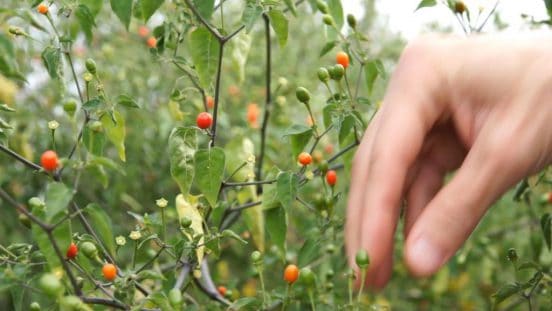“Foodies” have finally made a (very) few inroads into the fun-crazed, pleasure-suspicious puritanism that is the USA, and it’s immediately become popular to criticize their supposed snobbery.
Let me tell you something:
Sure, it doesn’t have to be eggs Benedict for breakfast and boeuf bourgignon for lunch, with beef from grass-fed cattle and a side of organic kale. A preachy better-than-thou that forgets that eating is also just nourishment is rightly unpopular.
There’s something to be said for rice and beans, and even for Mac’n’Cheese, if you are so inclined. Most people, however, still eat things that shouldn’t really be called food – and don’t give a flying fuck about it. Which doesn’t make them normal and not to be criticized, even if they should be the majority, but unthinking idiots. Not caring about food, the main source of nourishment, health, and pleasure we have, can’t stand.
 With the chilli, it may all easily be even worse.
With the chilli, it may all easily be even worse.
There are some traces of care about local landraces and their best use, but the general rise in popularity has wrongly made it all about the heat and thinking that there’s nothing but pungency. Hot sauces are a growth business, but it’s only making chilli another mass product. Typically, not even a product in and of itself, but a source of capsaicin and a standardized flavor, and nothing more. It’s a tragedy.
I’m talking in such strong language, not because I particularly enjoy it, but because I want to take a cue from the Japanese “concept of shokunin, an artisan deeply and singularly dedicated to his or her craft, like Katsuji Daibo with coffee or Jiro Ono with sushi…
The attention I’m increasingly paying to the chilli, culminating in the care for the chiltepin, is an obsession like that, searching for the perfect chilli.
The plant and its fruit is no attention-getter all by itself. Only by giving it deeper attention do its special qualities become apparent. And even then, it remains one of the rather more difficult among the peppers.
Thus, like the mindfulness of the person performing a tea ceremony, paying attention to every single step, I pay attention to the chiltepin:
Carefully, the seeds are germinated indoors long before temperatures outside are amenable to their growing.
The plants get set into their spots outside, individually and carefully.
In the growing and flowering periods, they are protected but not controlled, left to develop as they will.
Only the best chiltepin berries are picked, individually, over hours of concentrated work.
Finally, the chiltepines are sun-dried and selected a second and third time.
And the work will go on, over the years and harvests, creating varieties based on their original forms, fitting for their use, and changing as local conditions and careful selection will change them.
There is no way the effort can pay off financially, but it just is a type of chilli which has its particular characteristics and qualities. And for those, I want to give it the attention it deserves. It does pay off, in different ways. Not least, because the awareness extends itself to other varieties and entirely different hot spices, and their best uses.

Leave a Reply
You must be logged in to post a comment.